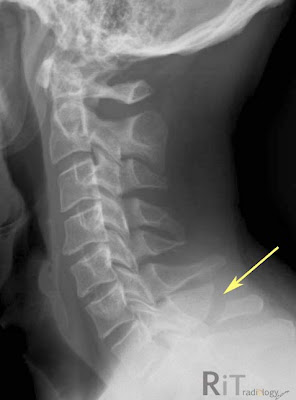
Planar image (anterior view) of an I-123 MIBG scan shows intense uptake in the midline of the lower abdomen in a patient with elevated urine metanephrine.
- Uncommon tumor arising from pheochromocytes of adrenal medulla, paraganglia near aorta or sympathetic ganglia
- Common in 4th-6th decades of life, men = women
- 10's rule: 10% bilateral, 10% malignant, 10% children, 10% extraadrenal
- Imaging used to localize tumor after laboratory confirmation of elevated urine metanephrine or resting plasma cathecholamine
- I-123 MIBG and/or MRI commonly utilized for localization
- Patient preparation include: suspend all medications that could interfere with MIBG uptake for 5-6 days (i.e., calcium blocker, sympathomimetics, reserpine), use potassium iodine or sodium perchlorate orally 1 day before scanning and continue for 7 days to block thyroid uptake of unbound iodine
- Scan done with planar imaging at 4 and 24 hours after tracer administration (300-370 MBq of I-123 MIBG)
- Diagnosis of pheochromocytoma when 1) adrenal uptake more intense than liver, 2) extra-adrenal focal uptake seen
- MRI alone had 93% sensitivity and positive predictive value (PPV)
- MIBG alone had 90% sensitivity and 100% PPV
- MRI + MIBG had 100% sensitivity and PPV




























